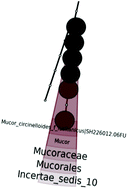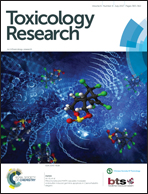Mucor circinelloides: efficiency of bioremediation response to heavy metal pollution
Abstract
Mucor circinelloides, selected from mine tailings for heavy metal bioremediation, was characterized at the genetic level by internal transcribed spacer (ITS) analysis. M. circinelloides was first applied for the absorption of heavy metals {Fe(III), Mn(II), Cu(II), Zn(II), and Pb(II)}. The minimal inhibitory concentration test showed that M. circinelloides could tolerate relatively high concentrations of heavy metals. M. circinelloides could uptake 79.5%, 44.1%, 62.5%, 56.5%, and 85.5% of Fe(III), Mn(II), Cu(II), Zn(II), and Pb(II), respectively, from the initial concentration of 20 mg L−1 under optimum conditions (pH 8; 30 °C). Monitoring the change in ATPase activity at certain intervals indicated that the mechanism of bioremediation was directly related to the energy consumption. M. circinelloides will be widely used for in-situ remediation in special environment because of strong vitality and excellent bioremediation efficiency.



 Please wait while we load your content...
Please wait while we load your content...